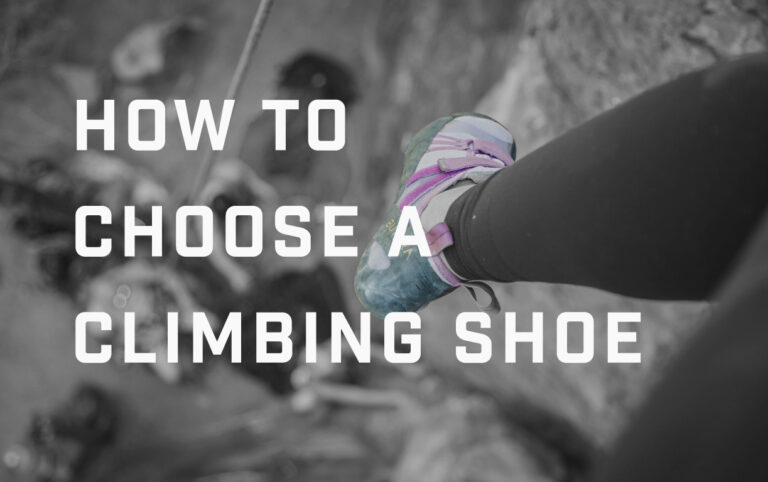Wondering how long a climbing harness typically lasts? Maybe your favorite harness just needs a little freshening up.
Want to know how to clean a climbing harness?
We’ve got quick answers for all your harness care questions.
If you want to know about washing climbing gear in general (harnesses, ropes, cams, shoes, and more), hop over to this article.
How Long Is Your Climbing Harness Good For?
If you’ve already read our article on choosing the best harness then you probably have an awesome harness that you love and want to take care of.
We get it. Finding the right harness is hard, and once you do you never want another.
Climbing harnesses do have a general lifespan and as sad as it might be, at some point you will have to part with your favorite harness.
Fortunately, properly caring for your harness can help it last longer.
Still, as per Black Diamond, even a properly cared for harnesses need to be retired at some point.
Exactly how long a harness will last is a bit more of a complicated question (more on that later).
When it comes to caring for you harness one of the first questions people usually ask is, “How do I clean my harness?”
Or, “Can you machine wash a harness?”
Read on to find your answers.
How To Clean A Climbing Harness
This may sound like common sense, but if you feel your harness needs washing, try simply rinsing it in luke-warm water first.
Modern materials shed dirt well. You’d be surprised what a quick rinse can do.
Additionally, if your harness is so dirty or worn that you feel it needs washing, you may also want to inspect it for wear and/or damage.
Sometimes, a harness just needs to be retired rather than being washed. Ensure that you know the difference.
Always allow your harness to completely air-dry away from direct sunlight or corrosive materials.
Nylon, what most of your harness is made of, is an incredibly strong material that can withstand a lot of abuse.
However, certain corrosive substances can degrade its strength and when wet nylon can lose 20-50% of its strength.
Although 20-50% is a large range, it is a fact that moisture can lead to decreased nylon strength.
If you want evidence, take a look at this video of Mammut testing their ropes’ strength when wet (@ minute 3:00)
Can You Machine Wash A Climbing Harness
Black Diamond and Petzl both state that it is ok to machine wash their harnesses if you follow some basic guidelines.
Here are Petzl’s suggestions for machine washing your climbing harness:
- Wash in lukewarm water at ~30°c
- Ensure neutral water ph
- Use delicate-synthetic cycle WITHOUT spin
- Wash harness inside a large cloth bag
- Use only mild soaps such as a face or body soap
- DO NOT use laundry detergents, solvents, stain removers/degreasers, bleach, etc.
- DO NOT use high-pressure water sprayers
- Allow to completely air dry away from chemicals and UV light
As noted above, wet nylon loses a lot of its strength, allow your harness to COMPLETELY dry before use.
Personally, I have never machine washed my harness. The same goes for ropes—which are made out of the same nylon material.
Manufacturers like Black Diamond and Petzl say its ok, but in my opinion, your machine could still have corrosive detergent, softener, residue from the pants you wore to change your oil and anti-freeze, or bleach in the tumbler from a previous load.
Any of this can put the integrity of your harness at risk. Ultimately, this puts you and your climbing partner at risk.
Probably not likely but still possible. Food for thought anyway.
Hand Washing Your Harness
If you feel the same and want to play it safe, try a dedicated large Tupperware bin or large bucket (you can use this to hand wash all your nylon gear like ropes, slings, cam-webbing, etc).
Ensure the bin or bucket is brand new (or you are 110% certain it has never come into contact with corrosive substances) then rinse it thoroughly before use.

- Fill the container with cool-warm water, then dunk your harness, agitating it gently as you do so.
- Manufacturers generally agree that use of a mild soap is ok. DO NOT use detergent and always check with the specific manufacturer before proceeding.
- Remove the harness from the dirty water, gently rinse, fill the container with clean water, agitate harness and rinse again.
- If using a mild soap, ensure you have rinsed it completely from the harness.
- Allow to air-dry completely away from direct sunlight.

How To Store A Climbing Harness
To ensure safety, your harness must be stored properly when not in use.
This includes but is not limited to storing your harness in a well-ventilated space out of direct sunlight or UV light.
Do NOT store near or with corrosive substances or materials such as but not limited to batteries, gasoline, oil, chemicals, cleaners, acids, bleach, etc.
Harnesses and other gear should not be stored in damp and/or moldy areas.
Once dry, you can use the same large Tupperware or bucket you used to wash your harness to store your gear. This will help protect it from UV light and possible contact with harmful substances.
Additionally, when traveling you can throw the whole container in the back of your car and it will also protect your gear from possible corrosive substances lurking in the back of your car or truck as well as direct sunlight.
If you do live in a damp environment where moisture/mold could be a challenge, you may want to drill some small ventilation holes in the lid or upper sides just under the container lip before placing gear inside.
As always, NEVER store damp gear. Allow your harness to dry completely before storage.
Avoid temperature extremes.
Both extreme cold and extreme heat can ruin a climbing harness.
After Climbing
After a climbing session, we usually throw our harnesses in a backpack to hike out or drive out.
If your harness is damp or wet after use, be sure to remove it from your pack as soon as possible. Allow your harness to air-dry before re-packing it.
Leaving your harness damp in a backpack or container can allow harmful mold/moisture to affect its structural integrity.
How Long Does A Climbing Harness Last
The easy answer is 1-3 years for a harness in use and 10 years for a harness NOT being used that is properly stored.
Most manufacturers agree that a harness’ shelf life—a harness that is properly stored but NOT used—should not exceed 10 years.
As a general guideline, Ropesonline.org got in touch with some manufacturers and suggest that a harness used a few times a month might last up to 3 years while a harness used daily or weekly should only last 1 year.
Again, these time frames are dependent on use and care.
When To Replace A Climbing Harness
When and how often to replace a climbing harness is not a fixed number.
If you are taking big whippers every day in the sandpaper splitters of the Utah desert under the daily onslaught of intense UV light then your harness is going to get dirty and worn down much quicker than someone who only gym climbs.
Each harness manufacturer has slightly different guidelines about when to retire a climbing harness.
A harness used for daily or near-daily climbing should be replaced at least once a year.
Climbers who only get out once a week or a few times a month might get a few years out of harness before it is time to retire it.
Regardless of use, any harness should be replaced after 10 years maximum and more appropriately after 1-3 years.
In all cases, when to replace your harness depends most on the frequency of use, type of use, and quality of care.
When retiring a harness, destroy it to prevent accidental unsafe use.
Be prudent and use common sense. A harness can last a long time but it is the user’s responsibility to determine the appropriate life span based on use and care.
Keep in mind these are guidelines. Always inspect your harness and consult with the manufacturer or an expert before use.
Inspecting Your Climbing Harness
Regularly inspecting your harness for wear and tear can help keep you safe.
Inspect your harness for damage and wear before and after each use.
A damaged or worn harness should be retired immediately.
Black Diamond suggests some things to look for indicating the need to immediately retire a harness:
- Any kind of rip or hole in the webbing
- Burnt, singed, or melted webbing
- Torn threads
- Heavily abraded webbing
- Faded webbing
- Bar tacks abraded or showing wear
- Cracked or corroded buckle
- Burr on any buckle
- Damaged or deformed buckles
- After a severe fall or force (even without obvious damage)
Summary
How long a climbing harness last is dependent upon the manufacturer, use, care, and damage.
On average, a harness seeing regular use can last anywhere from 1-3 years when properly cared for and inspected.
Harnesses that are properly stored but NOT used have a shelf life of 10 years maximum.
Keep your harness dry and clean.
Maintain a record of use so you know how much wear and tear it has suffered and how old it is.
Inspect your harness for damage and wear before and after each use.
Harnesses can be machined washed but try handwashing first.
If machine washing, use only the ‘gentle’ cycle WITHOUT spin.
Do NOT use detergents or other solvents such as bleach or degreaser.
Use ONLY mild soaps such as a face or body soap.
Rinse the harness completely after washing WITHOUT using any pressurized water.
Always allow a wet or damp harness to air-dry—out of direct sunlight— completely before use.
Store your harness is a dry space away from chemicals or corrosive substances such as acid or gasoline. Avoid damp and/moldy areas for storage.
Keep your harness out of extreme temperatures. Both excess cold and excess heat can destroy a climbing harness.
How long your harness lasts depends on use, environment, and care. A harness used daily and cared for properly may need to be retired after 1 year or sooner.
Always inspect your harness before and after use. If there is any doubts about its structure or history, retire your harness immediately.
Although climbing harnesses are extremely durable pieces of gear, they can be fragile and need to be cared for properly.
Take the time to care for and inspect your harness properly and it will continue caring for you day in and day out.
If you just retired a harness and are looking for the best, take a look at our post on the best harnesses for each type of climbing.
How old is your climbing harness?




